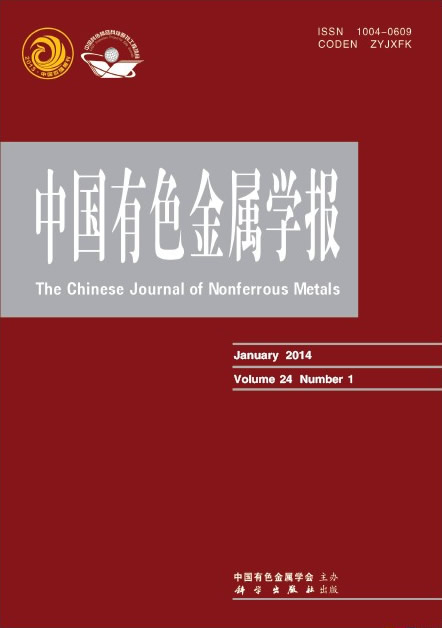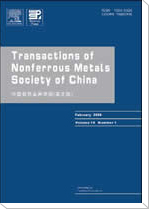(昆明理工大学冶金与能源工程学院,昆明 650093)
摘 要: 铜冶炼过程产生的烟尘和污酸等危险废物的无害化处理及有价金属的综合高效回收是铜冶炼行业亟待解决的重大环保问题。本研究采用“以废制废”的研究思路,利用污酸中的游离酸实现铜冶炼烟尘中有价金属的高效浸出。开展了铜冶炼烟尘与污酸协同浸出实验,深入研究关键宏观技术参数对铜、砷浸出率以及复杂砷物相的溶解及沉淀过程矿相转变行为的影响规律。结果表明:在反应温度80 ℃、液固比8:1、反应时间1 h、搅拌速度300 r/min、亚硫酸钠加入剂量为1的浸出条件下,铜浸出率高达99%,砷浸出率为80%,烟尘中的铅、银、铋等有价金属在浸出渣中的富集率达99%以上。协同浸出过程中砷酸铋、砷酸铁等难溶砷酸盐的形成,抑制了砷的深度浸出。反应温度对As(Ⅴ)的还原和As(Ⅲ)的氧化均影响显著,成为影响砷物相沉淀与溶解的主要因素;当浸出温度低于90 ℃时,反应体系中As(Ⅴ)与Bi(Ⅲ)结合形成晶型砷酸铋(BiAsO4)沉淀,且其热力学优势区随反应温度的升高而增大;当反应温度高于90 ℃时,As(Ⅴ)还会与Fe(Ⅲ)结合形成少量非晶型砷酸铁(FeAsO4)沉淀,且温度越高越有利于其形成;缩短反应时间或通过添加亚硫酸钠(Na2SO3)还原剂降低体系氧化还原电位可抑制砷酸铋(BiAsO4)的形成。
关键字: 铜冶炼烟尘;污酸;浸出;砷酸铋;砷酸铁
(Faculty of Metallurgical and Energy Engineering, Kunming University
of Science and Technology, Kunming 650093, China)
Abstract:The harmless treatment of hazardous wastes, such as dust and waste acid from copper smelting process and comprehensive recovery of valuable metals, are important environmental problems to be solved in copper smelting industry. In this study, the free acid in waste acid was used to high efficiently leaching of valuable metals from copper smelting dust with the ideal of treatment of waste by waste. The collaborative leaching of copper-smelting dust and waste acid was conducted, and the influence of key parameters on the leaching rate of copper and arsenic, and the dissolution, precipitation, and mineral phase transformation behavior of complex arsenic phases were intensively studied. The results show that, under the conditions of reaction temperature of 80 ℃, liquid-solid ratio of 8:1, reaction time of 1 h, stirring speed of 300 r/min, and the equivalent sodium sulfite addition of 1, the leaching rate of copper is as high as 99%, and the leaching rate of arsenic is 80%, and the enrichment rates of lead, silver, bismuth in the leaching slag are more than 99%. Because of the formation of insoluble arsenate, such as bismuth arsenate and iron arsenate in the collaborative leaching process, the efficient leaching of arsenic is inhibited. The reaction temperature has a significant effect on the reduction of As(Ⅴ) and the oxidation of As(Ⅲ), which becomes the main factor affecting the precipitation and dissolution of arsenic. When the leaching temperature is lower than 90 ℃, As(Ⅴ) and Bi(Ⅲ) converte to crystalline bismuth arsenate (BiAsO4), and its thermodynamic advantage zone increases with the increase of the reaction temperature. When the reaction temperature is higher than 90 ℃, As(Ⅴ) and Fe(Ⅲ) form a small amount of amorphous iron arsenate (FeAsO4), and the higher the temperature, the more favorable the formation of amorphous iron arsenate. The system''''s oxidation-reduction potential should be reduced by shortening the reaction time or adding sodium sulfite (Na2SO3) reductant, and it can inhibit the formation of bismuth arsenate (BiAsO4).
Key words:


